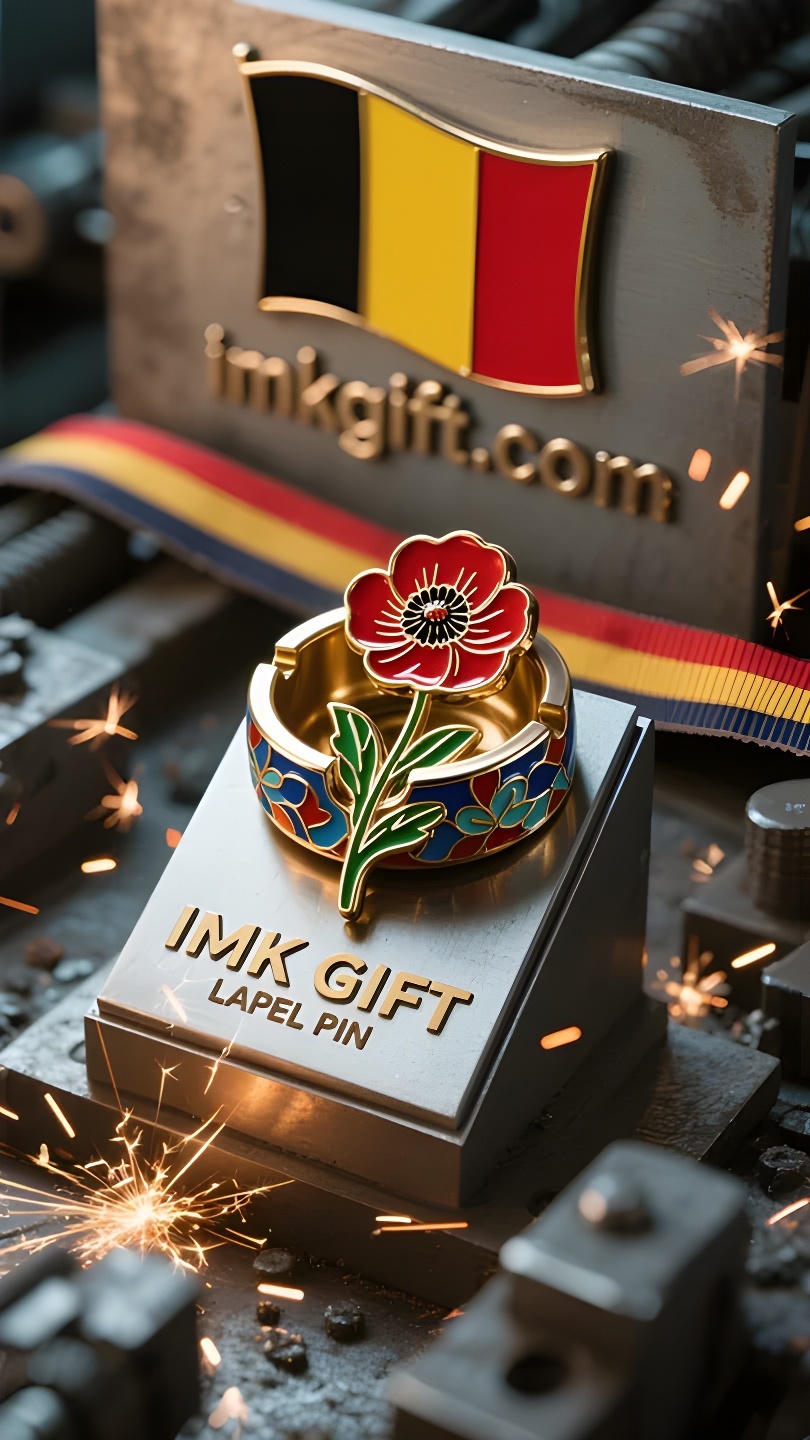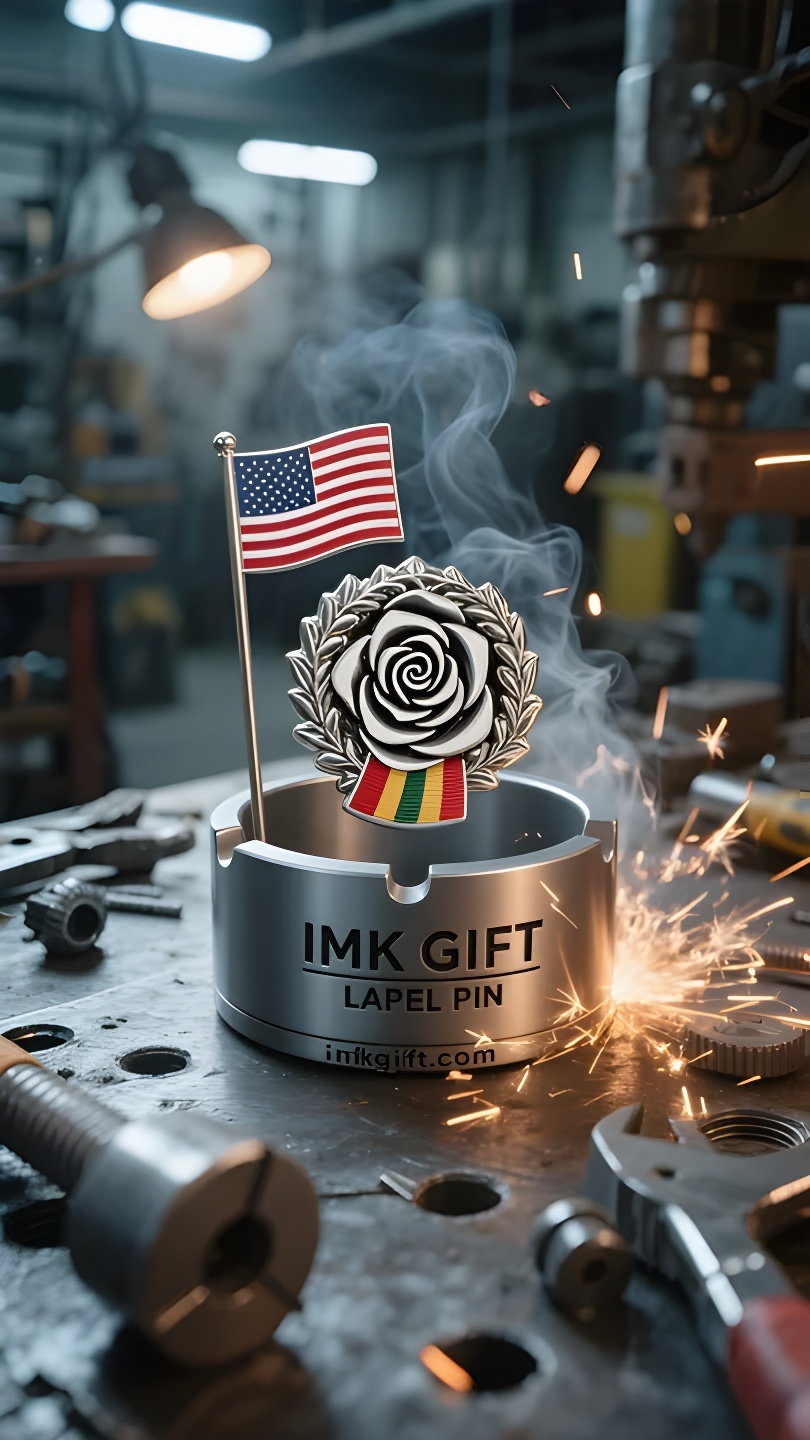in989-Boven-de-as-Driekleurige-bloemen-De-allegorie-van-de-wedergeboorte-van-de-Belgische-vlag-en-de-klaproos
▼
In België hing de lucht eind juli vol met de plechtigheid van het einde van de kruitrook. In deze maand van 1918 bloeiden de klaprozen hardnekkig in de verschroeide aarde van de slagvelden van West-Vlaanderen. Nu zijn ze reliëfs geworden op zilveren asbakken en vormen ze de meest betekenisvolle metafoor voor dit land. De zwarte, gele en rode kleuren van de Belgische vlag zijn als een terugblik op tijd en ruimte, een periode van oorlog en vrede. De zwarte aarde herinnert aan de 250.000 slachtoffers die op het slagveld in Vlaanderen vielen, de gouden tarwearen getuigen van de vasthoudendheid van de heropbouw uit de ruïnes en het helderrode bloed stolt tot de gelofte om nooit meer te vechten. En de klaproosasbak, met zijn koude, metaalachtige textuur, verpakt de vurige herinneringen – de kuiltjes houden de gloed van de oorlog vast, terwijl de klaprozen die aan de rand bloeien, wijzen op nieuw leven. Deze tegenstrijdige esthetiek is te vergelijken met het wonder dat de Belgen na de twee wereldoorlogen hun verwoeste land tot het hart van de Europese Unie wisten te smeden. De cirkelvormige patronen op de asbak symboliseren de cyclus van het nationale lot. Als de vingertoppen bewegen, zorgt de vallende as voor bloeiende klaprozen, net als de Grote Markt in Brussel na het bombardement. De gotische torenspitsen die uit het puin oprijzen, zijn altijd hoger dan het artillerievuur. Dit ontwerp is diep geworteld in de Vlaamse filosofie van overleven: ware moed is niet het vergeten van de pijn, maar het laten uitbloeien van de littekens tot bloemen die leven in het aangezicht van de dood. Vandaag de dag, voor het hoofdkwartier van de EU, waar de driekleurige vlag wappert, staat nog steeds de stille klaproosasbak die het verhaal vertelt: alle beschavingen die het waard zijn om te beschermen, zijn herhaaldelijk in de as beland. België gebruikt de zonneschijn in juli om ons te laten weten dat er, zelfs in de donkerste tijden van de geschiedenis, altijd licht door de grond schijnt.
At the end of July in Belgium, the air was filled with the solemnity of the smoke of war. In this month of 1918, the poppies on the battlefield of West Flanders bloomed stubbornly in the scorched earth. Now they have become the relief on the silver ashtray, becoming the most profound metaphor of this country. The black, yellow and red colors of the Belgian flag are like a slice of time and space of war and peace. The black land remembers the 250,000 lives swallowed by the battlefield of Flanders, the golden ears of wheat witness the tenacity of reconstruction in the ruins, and the bright red blood solidifies into a vow never to fight again. And the poppy ashtray is wrapping the fiery memory with the cold texture of metal – its concave part holds the embers of war, while the poppies blooming on the edge point to new life. This contradictory aesthetic is just like the miracle of the Belgians forging the devastated land into the heart of the European Union after the two world wars. The circular pattern of the ashtray implicitly coincides with the reincarnation of national destiny. When the fingertips flick, the ashes fall and give birth to the blooming of poppies, just like the Grand Place in Brussels after the bombing, the Gothic spires rising from the rubble are always higher than the gunfire. This design deeply embodies the survival philosophy of the Flemish people: true courage is not to forget the pain, but to let the scars bloom and live against death. Today, in front of the EU headquarters with the tricolor flag flying, the silent poppy ashtray is still telling us: all civilizations worth protecting have been repeatedly tempered in the ashes. Belgium uses the July sunshine to tell us that in the darkest folds of history, there is always light that breaks through the ground.
七月末的比利时,空气里弥漫着硝烟散尽的肃穆。1918年的这个月,西弗兰德斯战场的虞美人花在焦土中倔强绽放,如今它们化作银制烟灰缸上的浮雕,成为这个国家最深刻的隐喻。
比利时国旗的黑、黄、红三色,恰似战争与和平的时空切片。黑色土地铭记着佛兰德斯战场吞噬的25万生命,金黄麦穗见证着废墟中重建的坚韧,鲜红热血凝固成永不再战的誓言。而那只虞美人烟灰缸,正以金属的冷冽质地包裹着炽热的记忆——它的凹陷处盛放战火余烬,边缘盛开的虞美人却指向新生。这种矛盾的美学,恰如比利时人在两次世界大战后,将满目疮痍的国土锻造成欧盟心脏的奇迹。
烟灰缸的环形纹路暗合国家命运的轮回。当指尖轻弹,灰烬坠落却催生虞美人的绽放,正如轰炸后的布鲁塞尔大广场,碎石堆里崛起的哥特式尖顶始终比炮火更高。这个设计深埋着佛兰芒人的生存哲学:真正的勇气不是忘记伤痛,而是让伤疤开出向死而生的花朵。
如今三色旗飘扬的欧盟总部前,那只静默的虞美人烟灰缸仍在诉说:所有值得守护的文明,都曾在灰烬中反复淬炼。比利时用七月的阳光告诉我们,历史最黑暗的褶皱里,永远藏着破土而出的光。
▼
Contact Us
📞 Tel: +0086-760-85286839
📧 Email: sales3@imkgift.com








